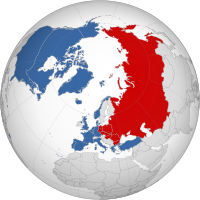
Photo from wikipedia
communities of both historians and younger generation geographers. In trying to explain this gap, and offering an alternative perspective for the integration of space into historiography, the content of the… Click to show full abstract
communities of both historians and younger generation geographers. In trying to explain this gap, and offering an alternative perspective for the integration of space into historiography, the content of the book shall be presented against the backdrop of the author’s claim. According to Schlögel, “we can form an adequate picture of the world only if we begin to think of the long-forgotten nexus of space, time, and action” (7). This collection of essays is organized into four main chapters spread over about 500 pages, including “The Return of Space,” “Reading Maps,” “The Work of the Eye,” and “Europa, Diaphanous.” Schlögel suggests nothing less than a new way of seeing and perceiving history as well as a “revival of the historical narrative itself” (xx), which in the sense of a “spatial” (18) or “topographical hermeneutics” (19) moves the reading of historical spaces by way of looking at their key locales of action, boundaries, and geographical representations (maps, city plans) to the center of historical scientific work. In his approximately fifty exemplary expeditions through various periods of world history (or perhaps rather through various places of the historical world), from Ground Zero to the fall of the Berlin Wall, from Auschwitz-Birkenau to Sarajevo and Moscow to the construction of India, he uses, relying on authorities like Walter Benjamin or Herodotus, the notion of the stroller or flâneur (215) as a conceptual tool to frame the experience of history in a spatial manner; to develop an investigation of “the spatial side of the historical world” (46). This “essayistic” book is indeed very well-written and entertaining to read. Schlögel is drawing attention to the long-neglected history of eastern Europe. But this very important task is tarnished by the aforementioned conceptual problems with a rather simplistic spatialization of time. To draw attention to the spatiality of history and social life in general is, of course, important. The question is, however, on the basis of what spatial concept? An important part of the work of humanities scholars and social scientists that subscribe to the spatial turn appears to be based on the assumption that geographical space is a given fact and not theory-dependent. As the latest theory developments in geography show, this is not the case. What space there “is” for actors depends on what the actors are doing. Schlögel’s important suggestion could provide insight.
Journal Title: Slavic Review
Year Published: 2018
Link to full text (if available)
Share on Social Media: Sign Up to like & get
recommendations!